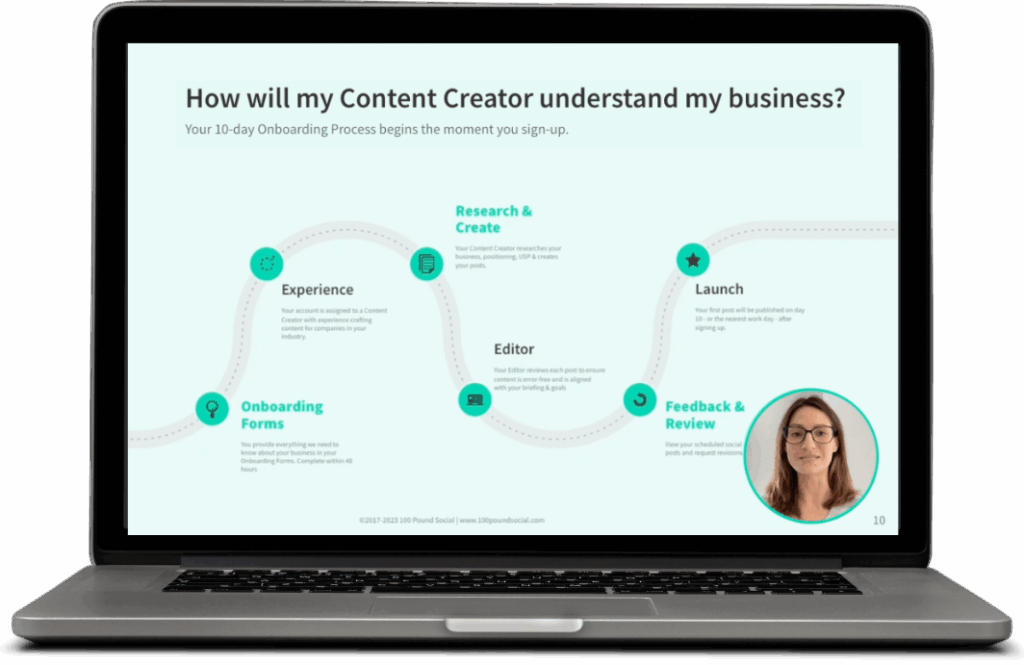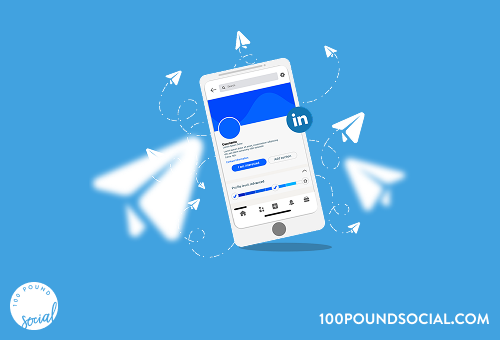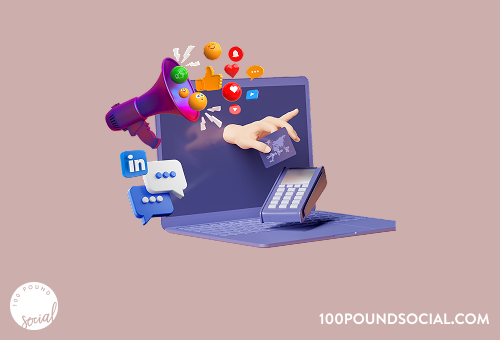Let’s face it – LinkedIn can be tough.
You’re posting regularly, sharing what you think is valuable content, but it feels like you’re talking to an empty room.
Where are the likes?
The comments?
The shares?
If this sounds familiar, you’re not alone. We’ve worked with hundreds of B2B companies across consulting, finance, tech, marketing, and other industries that all faced the same challenge: how to increase LinkedIn engagement and get actual humans to interact with their LinkedIn content.
In this article, we’ll cut through the noise and share eight practical strategies that work in the real world.
These aren’t theoretical tips – they’re battle-tested approaches from our work with hundreds of B2B companies who have successfully boosted their LinkedIn engagement rate.
Why LinkedIn Engagement Matters
LinkedIn isn’t just another social network — it’s where professionals, industry leaders, and decision-makers connect.
When your content receives likes, comments, and shares, it signals value to the LinkedIn algorithm, which then shows your posts to more people. A higher engagement rate on LinkedIn translates to expanded reach, stronger professional relationships, and better business outcomes.
Strategy 1: Know Your Audience
The foundation of successful LinkedIn content starts with understanding who you’re trying to reach. Your audience isn’t just a vague collection of professionals — they’re individuals with specific roles, challenges, and goals who come to LinkedIn seeking solutions to their professional problems.
Start by examining your LinkedIn analytics to identify who currently engages with your content. Look beyond basic demographics and pay attention to patterns:
- Which industries appear most frequently?
- What job titles do your most active followers hold?
- Which seniority levels interact with your posts?
This information forms the backbone of your content strategy and helps improve your LinkedIn engagement rate.
Creating audience personas takes this understanding deeper. For each main segment of your audience, document their typical pain points, professional aspirations, and the language they use to describe their work. These personas become invaluable when crafting content that feels personally relevant.
For example, if you’re a finance consultancy, you might notice your content attracts CFOs and financial directors from mid-size companies.
Through careful observation and direct conversations, you’d learn that these professionals struggle with implementing new financial regulations while maintaining operational efficiency. Your content would then address these specific pain points — perhaps sharing frameworks for compliance that don’t sacrifice productivity.
Download Our FREE LinkedIn Optimisation Guide Here →
Strategy 2: Optimise Your Posting Schedule
Posting when your audience is active on the platform significantly affects your LinkedIn engagement rate.
Timing matters because the LinkedIn algorithm tends to show your content first to a small test audience. If those initial viewers engage quickly, the platform expands your reach. This makes posting during your audience’s active hours essential for maximum visibility.
Most professionals check LinkedIn during specific windows in their workday: before officially starting work, during lunch breaks, and toward the end of the day when they’re winding down.
Generally, weekday mornings and early afternoons typically generate the highest engagement rate on LinkedIn. However, these general patterns should serve as starting points rather than rigid rules.
Your specific audience might have different habits based on their industry, role, and work.
Strategy 3: Create Conversation-Starters
Posts that invite discussion naturally increase your LinkedIn engagement rate. Instead of simply sharing information, frame your content to encourage responses.
Some effective approaches include:
- Asking specific questions related to your industry (a SaaS company might ask: “What’s your biggest challenge with customer onboarding automation?”)
- Sharing a professional experience and asking if others have encountered similar situations (a consultant could share: “We helped a client reduce reporting time by 60% with this approach — has anyone achieved similar results?”)
- Creating polls that prompt quick participation (a professional training firm might ask: “What’s your team’s preferred learning format: A) Virtual workshops, B) Self-paced courses, C) Blended learning, D) In-person sessions?”)
The goal is to make responding feel natural and worthwhile. When someone comments on your post, respond thoughtfully to keep the conversation going. Each interaction increases your post’s visibility and encourages others to join the discussion, boosting your LinkedIn engagement rate.
Strategy 4: Use Strong Visuals
Visual elements catch attention as people scroll through their feeds. In a platform increasingly dominated by text, distinctive visuals create stopping power that can dramatically increase the chances of your content being noticed and engaged with.
Posts with images generate a significantly higher engagement rate on LinkedIn than text-only posts, making visual strategy a critical component of your success.
The human brain processes visual information faster than text, which explains why well-designed visuals can communicate complex messages almost instantly.
On LinkedIn, where professionals often browse during brief breaks in their workday, this visual processing advantage becomes even more significant. You have mere seconds to capture attention before someone scrolls past your post.
Custom graphics that highlight key statistics or quotes serve as excellent attention-grabbers. A recruitment firm might transform hiring trend data into a simple bar chart showing demand growth across different professional sectors. This approach not only makes the information more digestible but also positions the firm as having its finger on the pulse of industry trends.
These custom graphics don’t need elaborate design — clean, branded visuals with a clear focus often perform better than cluttered, complex designs.
Strategy 5: Keep Your Posts Clear & Concise
LinkedIn users typically scan their feeds quickly during breaks in their workday.
Most professionals check the platform between meetings, while commuting, or during brief moments of downtime. This browsing behaviour means you’re competing for limited attention against dozens of other posts.
Clear, concise content has a distinct advantage in this environment, as it can be understood and appreciated within these narrow windows of attention – which is critical when you’re trying to increase LinkedIn engagement.
Clarity in your LinkedIn posts isn’t just about using simple language — it’s about communicating your ideas efficiently without unnecessary complexity. Research on LinkedIn content consumption shows that the average user spends less than seven seconds deciding whether to engage with a post. This brief evaluation period makes your opening sentence particularly crucial. It should immediately signal relevance to your audience and hint at the value your post provides.
Focusing on a single main idea per post significantly improves comprehension and the LinkedIn engagement rate.
When a software company addresses multiple features in a single post, the key benefits often get lost in the details. Instead, highlighting one solution — showing how it solves a specific problem for their target audience — creates clearer value and improves the likelihood of engagement.
This focused approach also makes your expertise more memorable, as readers can associate your brand with specific, helpful insights rather than general information.
Strategy 6: Add a Clear Call-to-Action
Guiding your audience toward a specific next step increases engagement and creates purposeful interaction with your content.
Every LinkedIn post should include a clear call-to-action (CTA) that aligns with your professional goals while providing value to your audience. Without this guidance, even the most insightful content often fails to generate meaningful engagement.
The most effective CTAs on LinkedIn feel like natural extensions of your post rather than forced marketing techniques.
They should flow logically from the content you’ve shared and offer readers an obvious way to continue their engagement with you or the topic. This approach respects the professional nature of the platform while still driving specific actions that benefit both parties.
Different types of CTAs serve different strategic purposes. Engagement-focused CTAs aim to generate comments, shares, or reactions—actions that increase the LinkedIn engagement rate.
Conversion-focused CTAs guide readers toward business objectives like website visits, resource downloads, or consultation requests.
A balanced LinkedIn strategy includes both types, with engagement CTAs typically appearing more frequently to build community before requesting more significant commitments.
Join a Demo and Tick Social Media Off Your To-Do List From £100/Month →
Strategy 7: Engage with Others First
LinkedIn engagement functions as a community, not a one-way broadcast channel.
Spending time meaningfully interacting with others’ content creates goodwill and increases the likelihood they’ll engage with your posts.
Make it a habit to:
- Comment thoughtfully on posts from connections and industry leaders (e.g., tech service providers can add value to discussions about emerging technologies)
- Respond promptly to comments on your own content (e.g., professional training firms should acknowledge participant questions within 24 hours)
- Tag relevant individuals when sharing content that specifically relates to their interests (e.g., a consulting firm might tag a client when sharing a case study featuring their success)
Companies that highlight client successes by tagging them appropriately often report stronger relationship development and more testimonials. This approach builds relationships that extend beyond individual posts, creating a network of professionals who regularly support each other’s content – which can greatly increase your LinkedIn engagement rate.
Strategy 8: Review Your Analytics
Data-informed decisions lead to better results over time.
Regularly examining your LinkedIn analytics helps identify what resonates with your audience so you can create more of that content while adjusting or eliminating approaches that aren’t generating engagement.
This methodical analysis transforms LinkedIn from a platform where success seems unpredictable to one where patterns emerge and strategies can be refined.
LinkedIn provides robust analytics for both personal profiles and company pages, though the depth of information differs between them.
For company pages, you can access detailed demographic information about your followers and the people engaging with your content.
This includes job functions, seniority levels, industry distribution, and company size. For personal profiles, you can see who viewed your profile and how your posts performed. Both sets of analytics offer valuable insights that should inform your content strategy to improve your LinkedIn engagement rate.
Understanding what metrics matter most helps focus your analysis.
While vanity metrics like total impressions might feel satisfying, engagement rate (the percentage of people who saw your content and then took action on it) provides a clearer picture of content effectiveness. Connection metrics, such as profile views and new connection requests following posts, indicate whether your content is driving relationship development. Conversion metrics track whether your LinkedIn activity generates tangible business results like website visits or consultation requests.
Different content types typically generate different engagement patterns. A SaaS company might find that integration tutorials outperform feature announcements, suggesting their audience values practical implementation guidance over awareness of new capabilities.
This insight could guide the company to create more educational content around existing features rather than focusing primarily on new release announcements. Without analysing these patterns, they might incorrectly assume that new feature posts should dominate their content calendar.
Moreover, analysis frequency matters for effective strategy refinement. Monthly reviews provide sufficient data to identify patterns without becoming overwhelming.
Quarterly deeper analyses help connect engagement trends to broader business results.
Annual comprehensive reviews enable strategic shifts based on long-term patterns rather than temporary fluctuations.
Professional service firms that maintain this structured analytics schedule typically see steadier growth in engagement compared to those who review metrics sporadically.
Moving Forward
Improving your LinkedIn engagement rate doesn’t require spending hours on the platform daily. Instead, it’s about being strategic with the time you invest. Focus on understanding your audience, creating valuable content that invites interaction, and building genuine professional relationships.
Remember that consistency matters more than sheer volume. Posting at least three times a week with a clear strategy will deliver far better results than posting more often without direction.
We’ve seen this proven across the B2B companies we support – from financial advisors to SaaS platforms, recruitment specialists to marketing agencies.
What strategy will you implement first to improve your LinkedIn engagement rate?
Next Steps
Implementing these eight LinkedIn engagement rate strategies takes time and expertise that many busy B2B professionals simply don’t have. This is where 100 Pound Social can make all the difference.
Since 2017, we’ve helped over 1,000 businesses worldwide increase their LinkedIn engagement rates and generate quality leads through strategic content. Our clients across consulting, finance, tech services, marketing, professional training, SaaS, recruitment, and software sectors report significant improvements in their social media performance.
Our £100 Posts Plan includes:
- Three engaging, industry-specific LinkedIn posts per week crafted by our UK-based content creators
- Strategic implementation of all eight engagement strategies covered in this article
- Additional platform coverage including Facebook, X (Twitter), Google Business Profile, and Instagram
- All backed by our 20-day money-back guarantee
Looking for more comprehensive content support? Our LinkedIn Lead Generation service uses 7+ years of B2B data to send high-converting messages to your ideal clients on LinkedIn — generating positive replies directly in your LinkedIn inbox. Join an 11-min demo to find out more.
Or if you want us to take care of all your social media, check out this free 15-minute demo to discover how we can craft expert content for your business, that drives real results.






